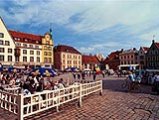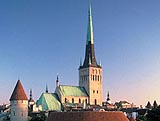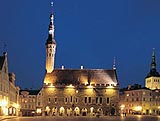ATTRACTIONS

Medieval Old Town
The unique value of Tallinn’s Old Town lies first and foremost in the well-preserved completeness of its medieval milieu and structure, which has been lost in most of the capitals of northern Europe. Since 1997, the Old Town of Tallinn has been on UNESCO’s World Heritage list.
Its powerful defensive structures have protected Tallinn from being destroyed in wars, and its lack of wooden buildings has protected it from burning down. But it is also crucial that Tallinn hasn’t been massively rebuilt in the interest of dispensing with the old and modernising the town.
Tallinn is one of the best retained medieval European towns, with its web of winding cobblestone streets and properties, from the 11th to 15th centuries, preserved nearly in its entirety. All the most important state and church buildings from the Middle Ages have been preserved in their basic original form, as well as many citizens’ and merchants’ residences, along with barns and warehouses from the medieval period.
The golden era in Tallinn’s history lies in the period between the early 15th and mid 16th centuries. Tallinn had attained fame and a powerful role in the Baltic Sea area through its membership in the Hanseatic League. Economic might carried with it both the need to defend the city and the opportunity for a rich period of architectural and artistic creativity.

The square in front of Tallinn’s Town Hall functioned as a marketplace for centuries, dating back to times even before the Town Hall itself was built. Through the years this served as a place of celebrations as well as executions.
Today the square remains a cultural focal point for the city. In summer, it’s filled with outdoor cafés and is home to countless open-air concerts, handicraft fairs and medieval markets. In winter, an annual Christmas Market enchants the crowds on the square, as does the town’s Christmas tree (a tradition whose roots stretch back to 1441), which stays up for a month or more.
Town Hall Square has also become the traditional centre of the Old Town Days festival, a modern version of a medieval carnival. Traditions from the Middle Ages are kept alive here, including parades, a knights’ tournament, a parrotshooting contest and the election of the May Count.

St. Olav’s Church was the tallest church in Medieval Europe. The earliest data on St. Olav’s Church come from 1267. Little is known about the building of this Gothic style church and its early years, but there may have been a church on this location as early as the 12th century, alongside the Scandinavian market yard. ...(more)

Tallinn Town Hall is the best-preserved Medieval town hall in Northern Europe.
The Town Hall was first mentioned as early as 1322, when it appears to have been in its present site on the Town Hall square. It was reconstructed and given the external appearance we see today, however, in 1402-1404...(more)
More attractions here |